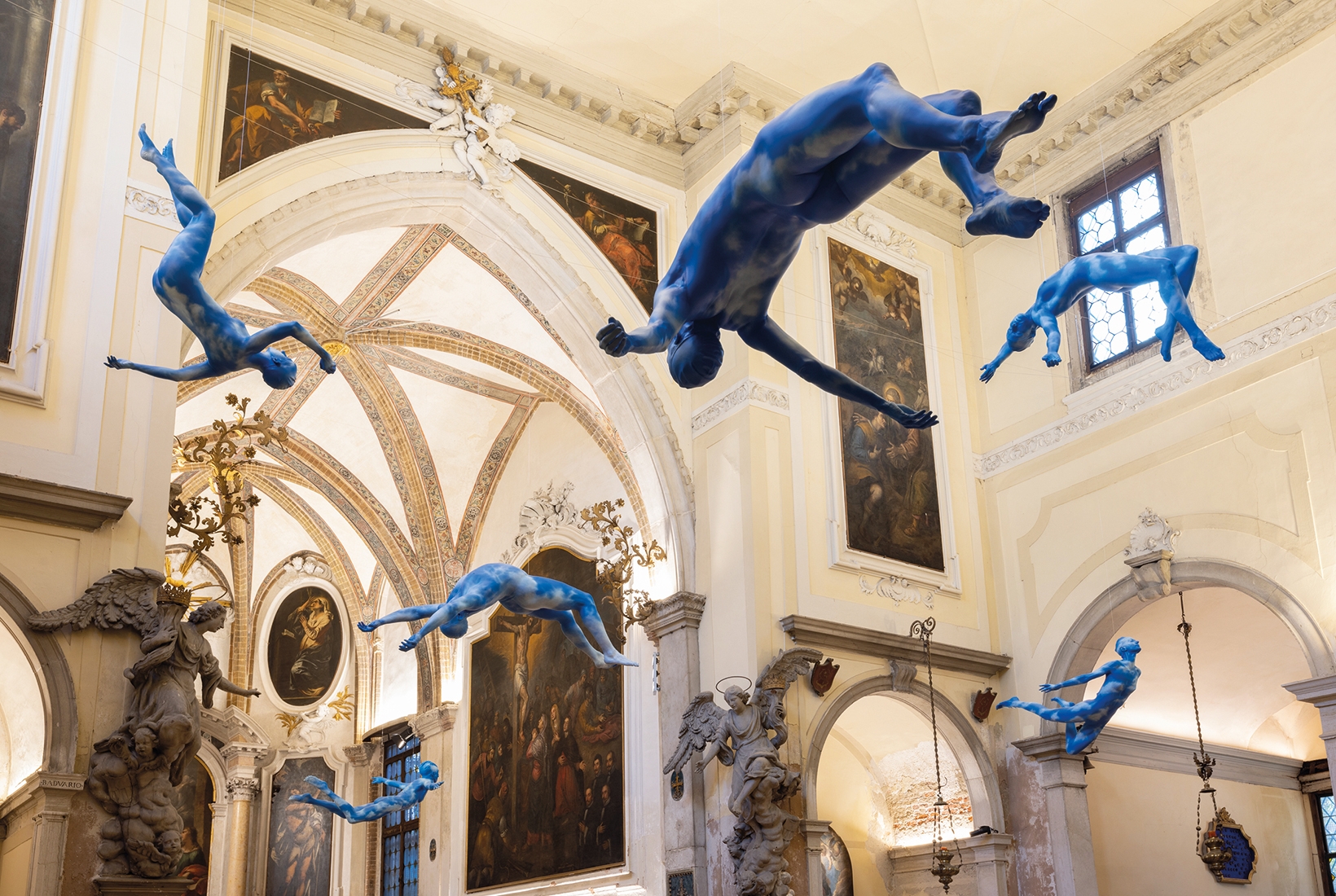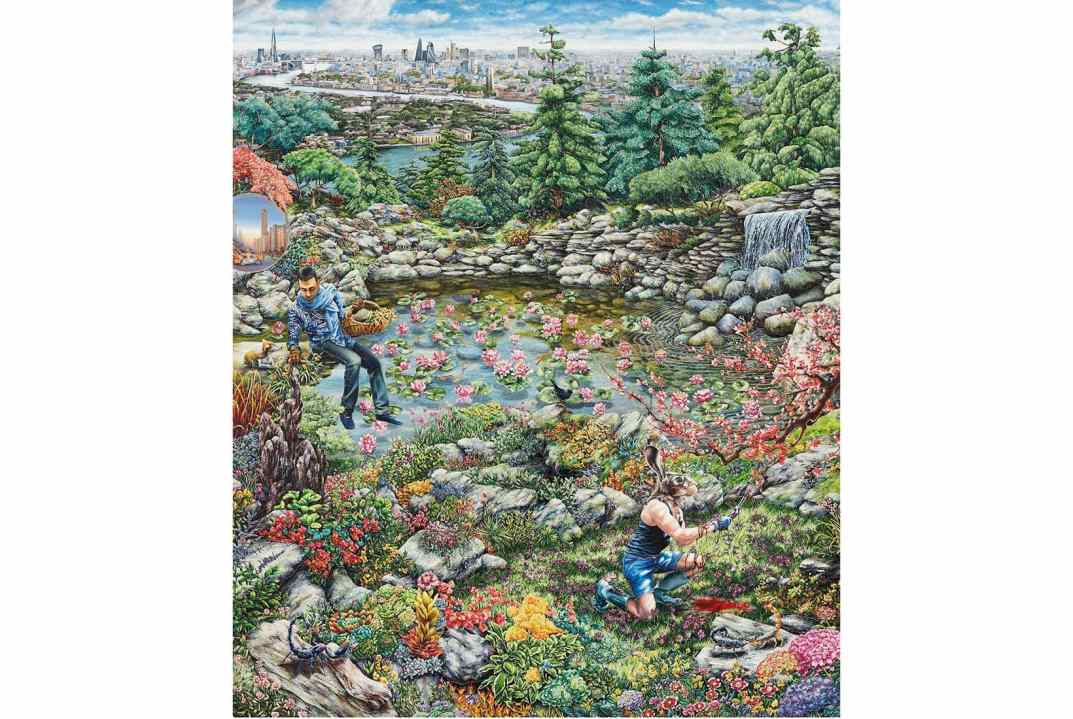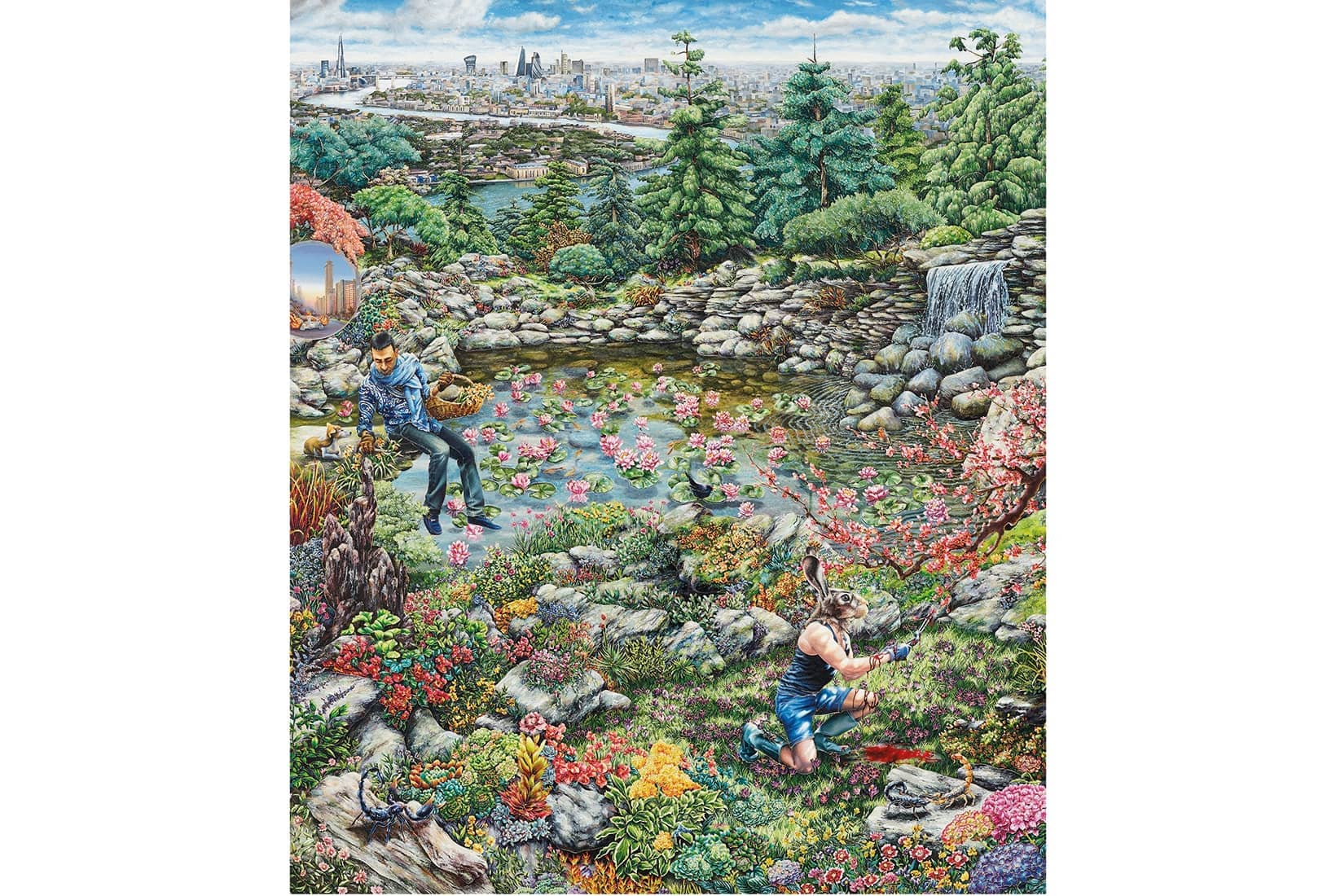Describing the Venice Biennale, like pinning down the city itself, is a practical impossibility. There is just too much of it, tucked away, scattered throughout the maze of alleyways and canals. And the art is no longer confined to the Biennale’s national pavilions in the gardens. It has spread, via dozens of tagalong shows cashing in on the presence of the global art world, to a motley array of disused palaces, warehouses, churches, at least one shop and a hidden garden loggia. A good way to sample it is just to follow your fancy: step through an ancient doorway and find out what is on the other side.
That’s how I came across a little show by the Swiss artist Ugo Rondinone in the venerable Scuola Grande di San Giovanni Evangelista. Inside the oratory, naked, sky-blue sculpted figures dangle from the ceiling, mingling with the baroque angels of the existing decoration (see below). The effect is contemporary yet time-honoured, since Venetian churches are often filled with fluttering, near-naked bodies (sometimes painted by Tiepolo).

That illustrates something that makes the Biennale fun. It happens in the spot where many of the features of art as we know it first appeared. Thus the combination of paint on canvas was, if not actually invented in Venice, something that became standard in the city.
A good way to sample the Biennale is to step through an ancient doorway and find out what is on the other side
There’s a lot of painting around this Biennale. After decades in which video has been the medium in vogue, the seesaw of art fashion is tilting towards (fairly) traditional pictures and sculpture. Although, of course, the fact that the medium is familiar is no guarantee of quality.
Nonetheless, there is admirable painting on display. Paula Rego effortlessly commands a central room in the main pavilion at the Giardini. No surprise there. But other fine paintings to be seen were unknown, at least to me, such as the jewel-bright, mesmerisingly detailed little pictures by Raqib Shaw at the Ca’ Pesaro. These mingle views of contemporary London with fairy-tale gardens and, especially for this occasion, coded references to Tintoretto and Giorgione.
The works of the West Coast American artist Mary Weatherford, exhibited at the Palazzo Grimani, attempt to mix a media you wouldn’t think would blend at all. They consist of loose, washy abstract painting plus tubes of neon electric light. The latter snake across the canvases like lightning strikes. I’m still thinking about these – so at least they are memorable.
Weatherford’s works cross the traditional (and often infringed) border between painting and sculpture. This is also the territory of Anish Kapoor’s twin exhibitions, one at the Accademia the other at Palazzo Manfrin, a run-down Piranesi-esque structure near the station.
Some of Kapoor’s new works play tricks with perception. He has had developed a pigment that is apparently the deepest midnight dark of all blacks, trapping almost all light. When you look straight at a shape coated in this, you are aware of just a flat shape like a simple, geometric picture. Only when you move to the side do you discover that you’ve really been contemplating a miniature pyramid or a bulging half-sphere.
These black sculpture/paintings are genuinely astonishing. But when Kapoor goes over to the other side of the frontier and paints actual pictures – mainly of wounds, vaginas and dripping gore – the magic evaporates completely. His talent, it seems to me, lies in ambiguity, the way he can make you unsure of just what you are seeing.
In the Piazza San Marco there is a delightful little exhibition in the vintage Olivetti typewriter shop, a minor masterpiece by the 20th-century Venetian architect Carlo Scarpa. This makes a perfect venue for a selection of small sculptures and drawings by Antony Gormley and the 20th-century Italian-Argentinian artist Lucio Fontana (1899-1968).
The revelations are, firstly, that Fontana, who is best known for the paintings he decisively sliced through with a knife, was at heart a sculptor preoccupied by ideas about space; and also how much Gormley has in common not only with Fontana but also with Scarpa’s spare architecture.
Upstairs from the Olivetti shop in the rooms of Procuratie vecchie, recently restored by the architect David Chipperfield, there is an exhibition of work by the American artist Louise Nevelson (1899-1988). Her art was confected out of found pieces of turned and carved wood which accumulated into room-sized objects resembling cupboards, boxes, altarpieces and idols. These were then painted matt black, white or perhaps gold. Nevelson, one discovers, was born in Ukraine, and with that in mind her sculptures look Eastern European as well as American: there’s a touch of Brancusi about them as well as a feeling of New York.
The atmospherically crumbly Scuola Grande della Misericordia is the venue for a poignant show, This is Ukraine: Defending Freedom, containing, among other things, works by Maria Prymachenko, a beguiling folk painter some of whose pictures have been destroyed in the current war. The contrast between this and the Russian Pavilion, shut up and dark, demonstrates how even as we watch, the world is always changing – except Venice, that is, which somehow always manages to remain the same.







Comments